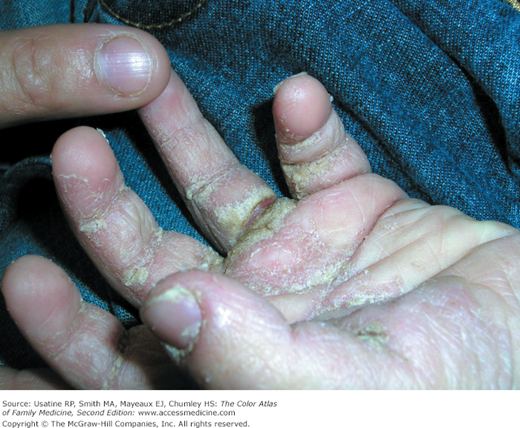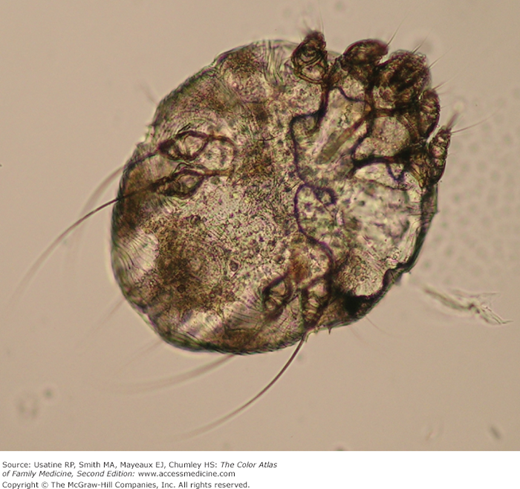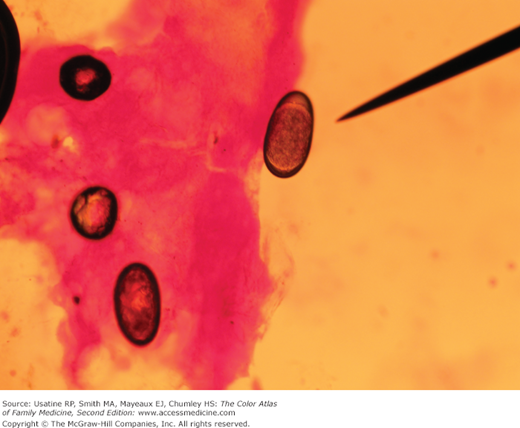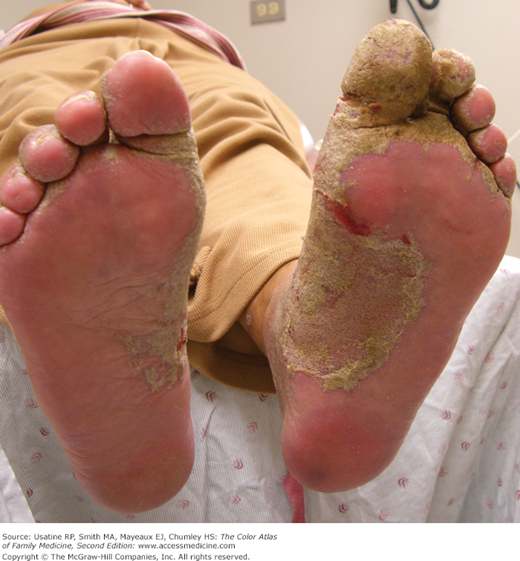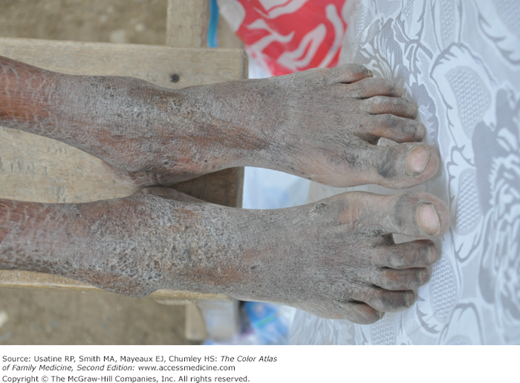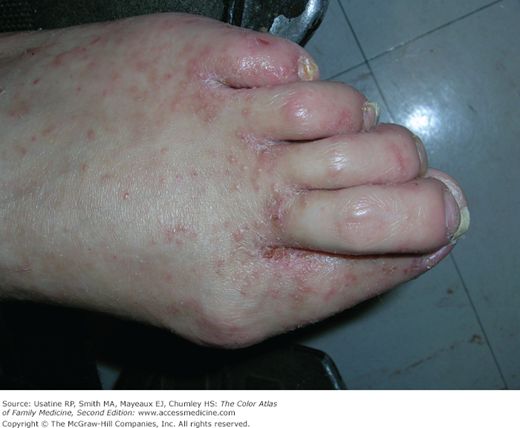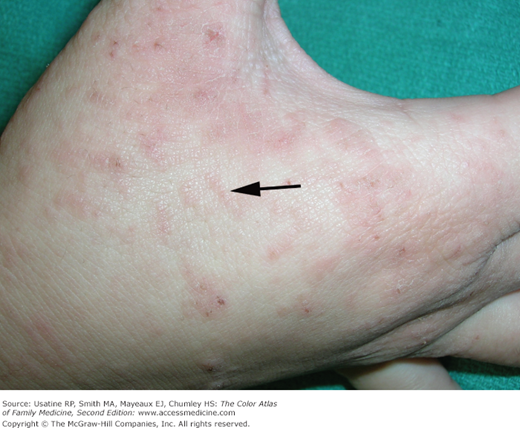Patient Story
A 2-year-old boy is seen with severe itching and crusting of his hands (Figures 143-1 and 143-2). He also has a pruritic rash over the rest of his body. The child has had this problem since 2 months of age and has had a number of treatments for scabies. Other adults and children in the house have itching and rash. Various attempts at treatment have only included topical preparations. A scraping was done and scabies mites and scybala (feces) were seen (Figures 143-3 and 143-4). The child and all the family members were put on ivermectin simultaneously and the Norwegian scabies cleared from the child. The family cleared as well and the child was given a repeat dose of ivermectin to avoid relapse.
Figure 143-2
The boy in Figure 143-1 with a close-up of his hand showing crusting and a fissure. (Courtesy of Richard P. Usatine, MD.)
Epidemiology
- Three hundred million cases per year are estimated worldwide.1 In some tropical countries, scabies is endemic.
- The incidence of scabies in a study performed in general practices in England and Wales was 351 per 100,000 person-years in men and 437 per 100,000 person-years in women.2
- Data from the Royal Infirmary in Edinburgh show that 5% of patients with skin disease between 1815 and 2000 had scabies; the prevalence during wartime reached over 30%.3
Etiology and Pathophysiology
- Human scabies is caused by the mite Sarcoptes scabei, an obligate human parasite (Figure 143-3).1,4
- Adult mites spend their entire life cycle, around 30 days, within the epidermis. After copulation the male mite dies and the female mite burrows through the superficial layers of the skin excreting feces (Figure 143-4) and laying eggs (Figure 143-5).
- Mites move through the superficial layers of skin by secreting proteases that degrade the stratum corneum.
- Infected individuals usually have less than 100 mites. In contrast, immunocompromised hosts can have up to 1 million mites, and are susceptible to crusted scabies also called Norwegian scabies (Figures 143-1, 143-2, and 143-6, 143-7, 143-8, 143-9, 143-10).1
- Transmission usually occurs via direct skin contact. Scabies in adults is frequently sexually transmitted.5 Scabies mites can also be transmitted from animals to humans.1
- Mites can also survive for 3 days outside of the human epidermis allowing for infrequent transmission through bedding and clothing.
- The incubation period is on average 3 to 4 weeks for an initial infestation. Sensitized individuals can have symptoms within hours of reexposure.
Risk Factors
Diagnosis
- Pruritus is a hallmark of the disease.1
- Skin findings include papules (Figure 143-10), burrows (Figure 143-11 and 143-12) nodules (Figures 143-13), and vesiculopustules (Figure 143-14).
- Burrows are the classic morphologic finding in scabies and the best location to find the mite (Figures 143-11 and 143-12).
- Infants and young children can also exhibit irritability and poor feeding.
- Pruritic papules/nodules around the axillae (Figure 143-13), umbilicus, or on the penis and scrotum (Figure 143-15 and 143-16) are highly suggestive of scabies.
Stay updated, free articles. Join our Telegram channel

Full access? Get Clinical Tree



